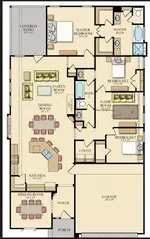R
Real100
New member
My current room is about 15x11x7.5' ht, so I say use your spare bedroom, But don't use tile for the floor, too reflective and noisy. Hardwood would be best, otherwise consider laminate. But for now, leave the carpet, and see what things are like. The larger family room would only be a good option if you could add acoustic treatment in it.
GIJ Acoustics and ARS Acoustics are two good sources for rockwool or compressed fiberglass panels (and it is very easy to make your own).
I was going to use area rugs on top of the tile. The main area of the house is all wood-look tile, so I thought I might try to match it up. I'm planning to remove a closet from the room, so I will get a full 14x10. Currently there's a closet taking up about 3x8 on the back wall. I could leave the carpet, but I hear many folks recommend going with the hard surface with area rug on top. Also, that might make it easier to roll chairs around. I'm going to be hiring contractors to remove a closet, so I could add the flooring piece to the job. Will the tile really be a problem with area rugs on top? My realtor mentioned that the wood-look tile was the best flooring option available as far as durability goes. I do like the look of hardwood, but not sure if that's my best option for resale versus trying to match the flooring in the main area of the home. Resale is not my top priority, though, and I'm sure I could still sell the home later if this room had hardwood in it.
What's a good initial approach for treatment? I was thinking broadband absorbers on side walls and ceiling with bass traps in all corners. I forget how the door is located in the room, but it might prevent me from treating one corner. Would you recommend absorbers only for a 14x10 room or would there be any benefit from also adding diffusion? I've been reading a lot of stuff. I forget but seems like it was stated that the diffusers are really more for larger rooms and small room should just be lots of absorption.

